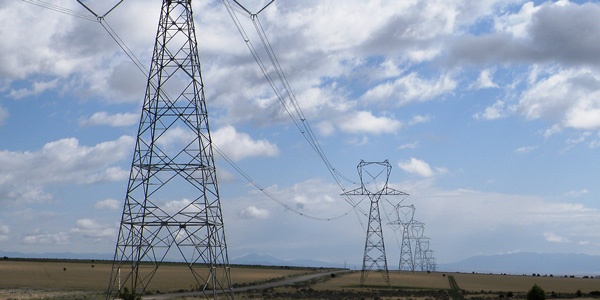By Jason Fordney
CAISO must address fundamental flaws in its proposal to allow third-party transmission providers to make unused capacity available to the Western Energy Imbalance Market (EIM), according to the ISO’s internal Monitor and market participants.
The Department of Market Monitoring said the ISO must consider that the rule change could incentivize third-party transmission providers to withhold transfer capacity from the EIM in order to increase their own revenues from congestion.
The Monitor and imbalance market participants filed comments with CAISO on a combined set of EIM-related proposals, which also include measures to address monetary charges related to bilateral schedule changes and allow EIM balancing authority areas that wheel power to share in revenue from energy transfers. (See CAISO Proposes Consolidated EIM Changes.)
‘Self-defeating’

Current EIM rules allow members to collect congestion revenue from the market through an offset. Under the ISO’s proposal, that benefit would be extended to third parties that offer their unused capacity to the market in order to increase transfer capacity between imbalance market areas.
But the Monitor pointed out that the change could enable a third-party transmission owner to offer transmission for EIM transfers and then reduce the quantity available, creating congestion revenue for its own benefit. The Monitor recommended that the ISO restrict transmission providers’ ability to reduce capacity once offered.
Compared with other imbalance market entities, “third-party transmission providers may be less likely to have ownership interest in generation resources which would be impacted by market prices,” the Monitor said.
The Bonneville Power Administration argued that the proposal is “self-defeating” because transmission providers would be decreasing their own congestion revenues. BPA said that “in order to incent third-party transmission to be made available to the EIM, the CAISO needs to find a compensation method that fairly compensates the third-party contributor even when no congestion exists.”
Pacific Gas and Electric questioned whether the proposal creates a disincentive for non-EIM entities to participate more fully in the market. “PG&E would also be interested in the CAISO sharing any studies or insight it has on what transmission transfer capability (i.e., what paths) it anticipates making available via this change,” the utility said.
PacifiCorp said “the proposal should explicitly address how market power potential is addressed in light of the possibility of transmission capacity withholding where the entity contributing the transmission may also be a transmission provider or path operator with the ability to constrain dynamic capability and/or all flows on an EIM transfer tie.” The company also raised questions about market transparency, saying there are issues about validating congestion rent payments.
Seams Scheduling Mismatch
CAISO is also exploring whether it can use its current “wheeling bid” function to manage bilateral schedule changes originating within or moving across the imbalance market footprint. Under current EIM practice, such schedule changes made after the submission of hourly base schedules are exposed to real-time imbalance settlement payments that are not known ahead of time.
Adding wheel-out functionality would help market participants avoid imbalance charges by enabling them to pair their scheduled imports with an EIM export closer to the time of delivery. It would also allow for an EIM generating resource to pair its output with an export from the EIM area. Currently there is no functionality to support an import bid that sinks into the EIM area because non-participating load does not bid into the real-time market, CAISO said.
BPA said the proposal does not address a major seams issue between the EIM and Western bilateral markets because load inside the imbalance market is unable to make schedule changes after the window has closed for hourly base schedules.
“That window is both well ahead of the [Western Electricity Coordinating Council] standard for changes to hourly schedules and also doesn’t allow for loads to benefit from 15-minute schedules as they are implemented throughout most of WECC,” BPA said.
Imbalance market loads are precluded from adjusting schedules to reflect changes in load or generation and often have to choose between minimizing a scheduling error or being exposed to unknown prices, the result of which may be an actual increase in imbalance in the EIM, BPA said. The power agency said it “encourages the CAISO to develop a mechanism for parties to make scheduling adjustments for bilateral imports into an EIM entity consistent with standard bilateral scheduling practices.”
Wheeling Changes
Market participants are also analyzing CAISO’s proposal to allow balancing authority areas through which power is wheeled to share in revenue when energy transfers occur. EIM energy transfers through balancing areas are exempt from wheeling charges, and the market rule changes would allow the source, wheel-through and sink balancing areas to share in revenue recovery.
PG&E said that although it is “open to examining the allocation of wheeling benefits holistically at some point, this change would seem to create a somewhat ad hoc form of rate pancaking not aligned with the current imbalance market structure and principles.”
The Monitor said it would examine the wheeling charge and “intends to closely follow the policy development in this area, with the goal of maintaining efficient market design as the ISO seeks to address concerns of equity.”
CAISO last month published an issue paper describing the three EIM modifications and expects to submit the proposals to the EIM Governing Body in October and the ISO Board of Governors in November.




